

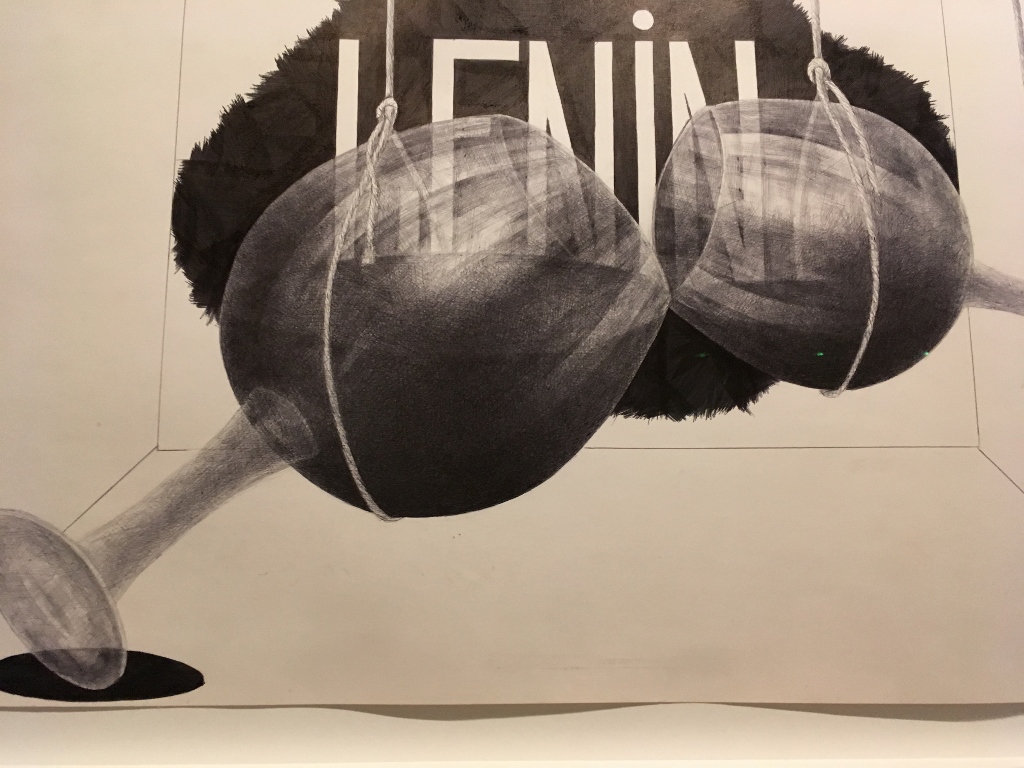
A brief post. One more celebration of the Russian Revolution in London. Such celebrations seem to absent in the US except among socialists. This fabulous drawing of glasses supspended in nooses in front of a black cloud inscribed with Lenin’s name suggests both where the artist is coming from, as well as where we are today.
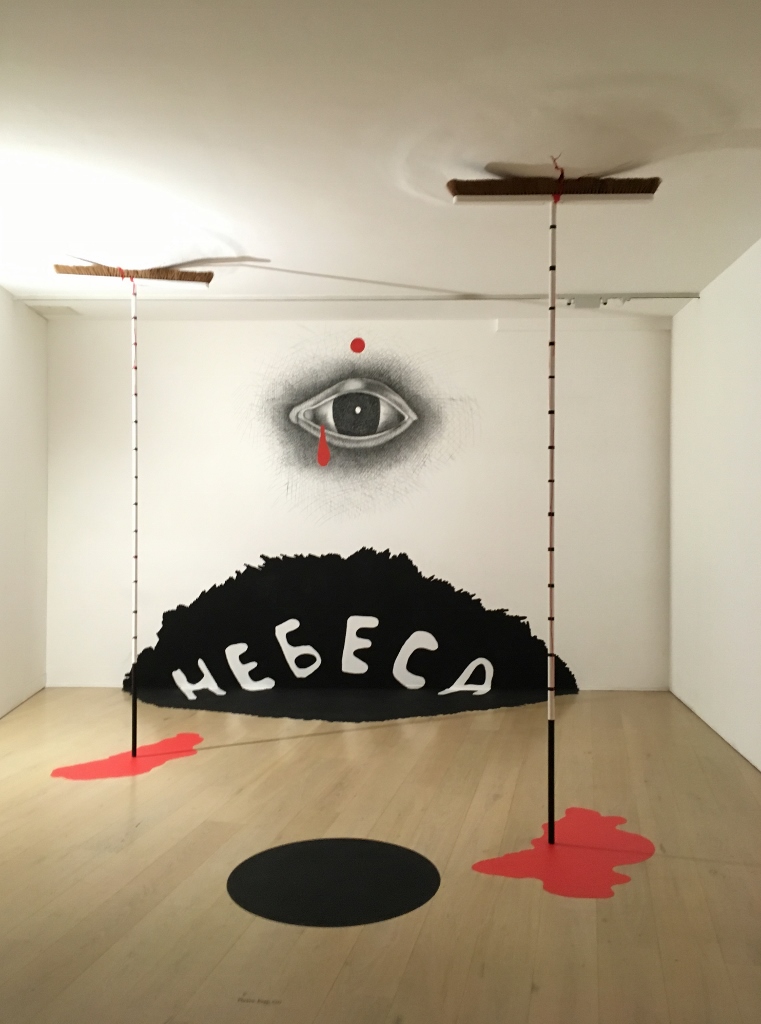
Heavens Series with Brooms, 2000
Dmitri Prigov’s exhibition at 22 Calvert in London included some stunning installations. Look closely at this installation. Two upside down brooms hold up a bulging ceiling, placed in a pool of “blood,” the word “Heaven” in Russian in a black cloud coming out of the floor, not where we think of heaven, and an all seeing eye where heaven is supposed to be. It is sardonic, elliptical and provocative. The installation at 22 Calvert is the first time it has been realized. A lot of Prigov’s work are unrealized or “phantom” installations.
He was a poet performance dissident artist in the 1970s, he was institutionalized by authorities in a mental institution in the 1980s. Starting in the 1990s and 2000s he began to create visual art and became well known in Europe.
My knowledge of Russian contemporary art of the 1990s is slight, but what I see here is a direct line to the avant-garde artists who emerged just before and just after the Russian Revolution. Artists like Malevich, Lissitzky, and in his interest in words, Mayakovsky. Boris Groys has written a valuable article distinguishing the lack of purity in Pirov’s messy black splotches compared to, for example, Malevich’s black square. He also connects Prigov to the Dada artists, performance poets.
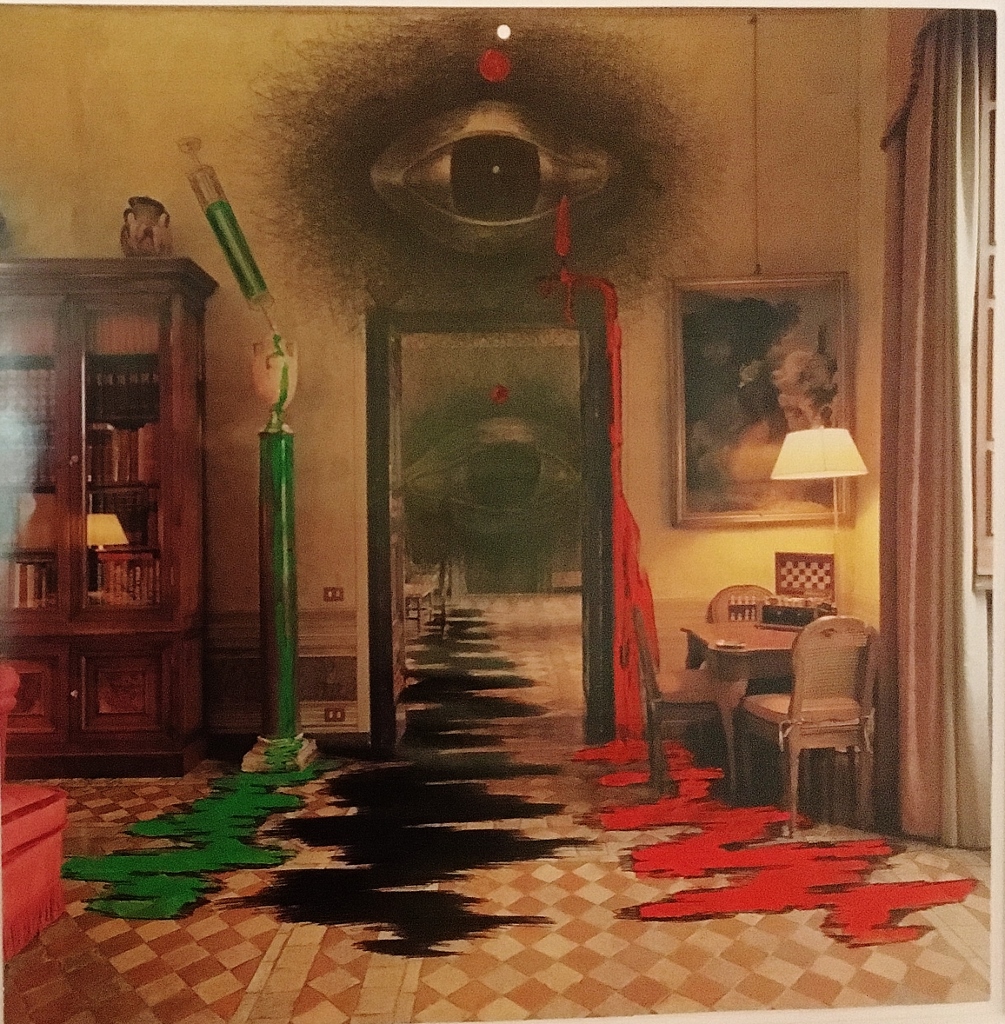
From the Series Palaces
Prigov represents a despoiled historical world as well. Here the interior of a Russian (Winter?) Palace, perhaps the blood of revolution flowing on the floor in three colors.
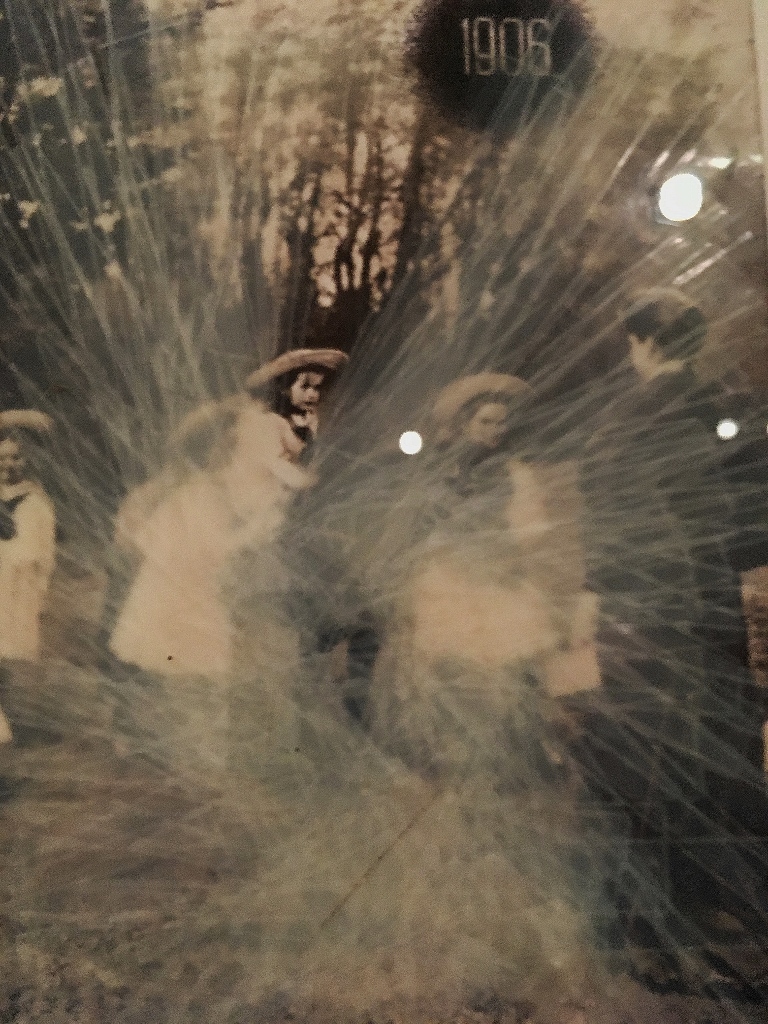
Another strange work, based on a pre Revolutionary photograph covered in scotch tape.
In the late 1970s, when Prigov was first performing as part of the underground dissident Russian artists, I had the privilege of taking a course with John Bowlt, then a young professor, now an established and renowned expert on Russian avant garde art.
At that time, Professor Bowlt had just returned from Russia, where he had visited the dissident artists and was able to bring back some of their clandestine work. I still remember when we saw it in class. It was very exciting. Of course the 1970s was long before the great changes in the Soviet Union following the end of the wall in 1989 and the breaking up of the Soviet Union subsequently.
So Prigov’s work of the late 1990s and 2000s that we saw in the exhibition addressed contemporary realities, but he has his roots in that 1970s underground as a performance/poet. 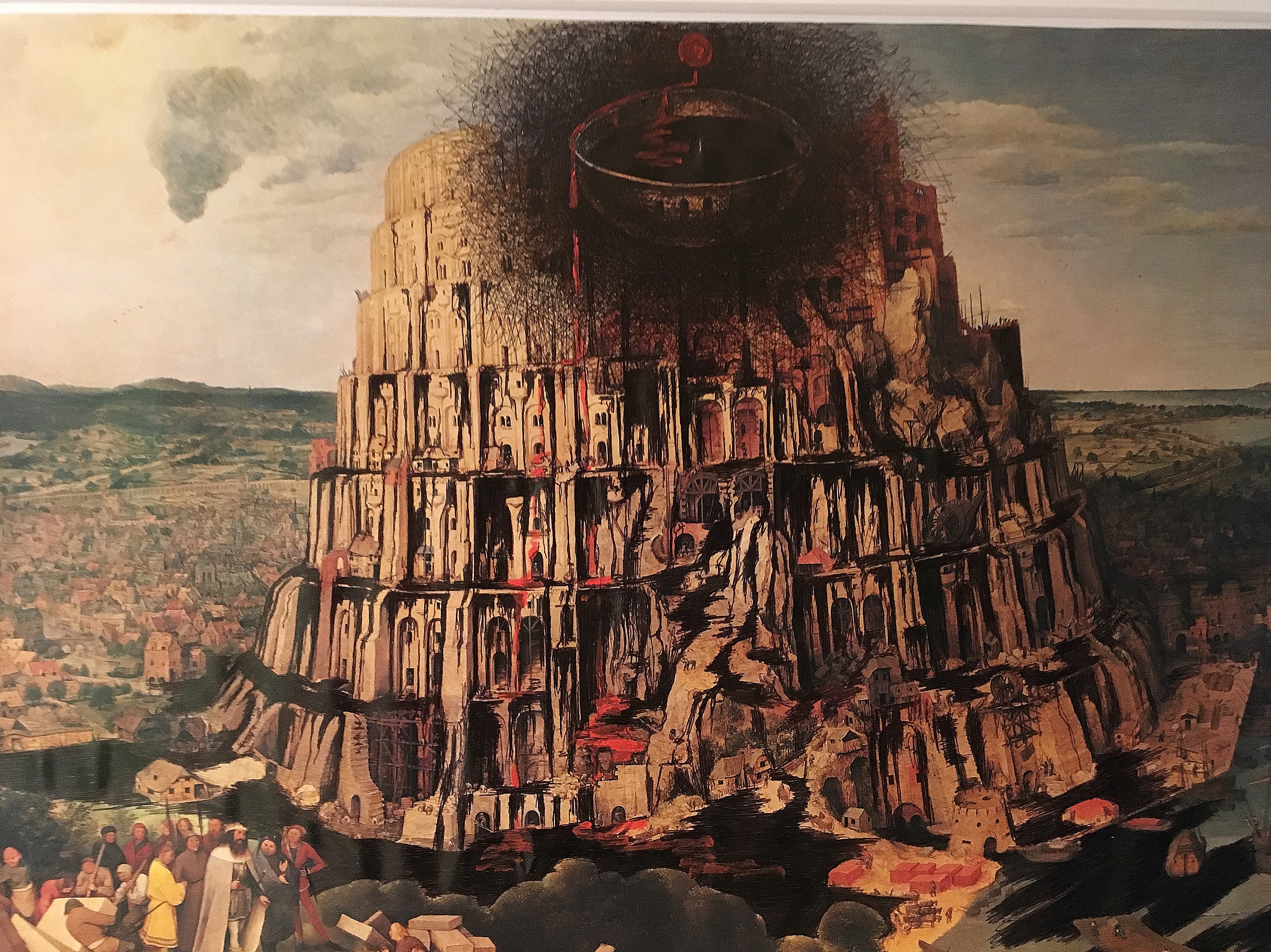
Here is a post Soviet mood, the disintegrating Tower of Babel by Brueghel (using a reproduction), and the all seeing eye.
His emphasis on the all seeing eye, and surveillance, fits with the work of Pussy Riot, discussed in a previous blog. He also, like them, connects to ritual, religion, mysticism, and performance in his work. Eccentric references such as here, are hard to decipher:

The cleaning woman and Angels
The caption reads: “She has bowed her head and does not see what
is happening around her, although, of course, she already knows it all
otherwise would she stand and mutter, “no! no! no!”
What is this about, the hopelessness of cleaning up this mess, perhaps a metaphor for the post-Soviet world. I am not sure.
What is quite clear is that Prigov was something of a megalomaniac. He left thousands and thousands of poems when he died, and lots of unrealized installations.
Fortunately, I went to this exhibition for an evening focusing on feminism and women artists of the 1990s. Katy Deepwell, editor of n. paradoxa, the renowned international feminist journal, spoke about several avant garde women from this era and several artists also spoke. It is clear that the dissident scene in the 1970s was dominated by men, so it was good to see women emerging in the post soviet era. Here is a link to the search page in the magazine, if you type in Russia, you will find many useful articles on Russian women artists in n.paradoxa.